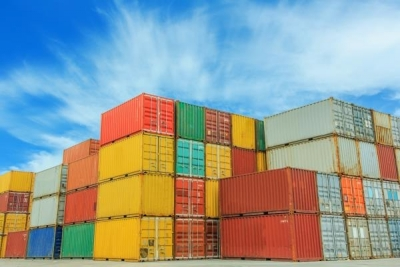India's export loss due to higher US tariffs limited to 0.3 to 0.4 pc of GDP: Report
By IANS | Updated: August 1, 2025 14:59 IST2025-08-01T14:53:32+5:302025-08-01T14:59:43+5:30
New Delhi, Aug 1 The direct export loss from the higher US tariffs announced on Indian exports could ...

India's export loss due to higher US tariffs limited to 0.3 to 0.4 pc of GDP: Report
New Delhi, Aug 1 The direct export loss from the higher US tariffs announced on Indian exports could be limited to around 0.3-0.4 per cent of its GDP as the country’s largely domestic-driven economy and its relatively low share of goods exports to the US should provide some cushion, according to a CareEdge Ratings report released on Friday.
"Not only is India’s overall export dependence relatively low, but its merchandise export exposure to the US is also low at around 2 per cent of GDP, offering additional resilience," the report contends.
Moreover, India’s services exports remain outside the scope of these tariffs and should continue to support the external sector, the report states.
The report also projects the current account deficit (CAD) to remain manageable at 0.9 per cent of GDP in FY26.
Any diversification in India’s oil imports away from Russia is expected to have a minimal impact on India’s CAD, as the price differential between Russian Ural and the benchmark Brent Crude has significantly narrowed to around $3 per barrel from an average of $20 per barrel in 2023.
India’s merchandise exports to the US stood at $87 billion in FY25. Electronic goods accounted for the largest share of exports at 17.6 per cent. This was followed by pharma products (11.8 per cent) and gems & jewellery (11.5 per cent).
The US accounts for 37 per cent of India’s total electronic exports. Select items from this sector have been temporarily exempted from the 25 per cent US tariffs. Additionally, India’s pharma exports to the US (accounting for 35 per cent of India’s total pharma exports) have also been excluded from the tariffs, the report states.
However, the overarching risk of sector-specific tariff action remains. India has one of the highest numbers of US FDA-approved manufacturing facilities catering to the generic medicine requirements of the US. While tariff uncertainties persist, the sector's fundamental competitive advantages offer some resilience, the report observes.
India’s relative tariff advantage for its exports to the US compared to several Asian peers, such as Vietnam, Indonesia, and South Korea, has effectively reversed following the 25 per cent US tariff, along with the possibility of an additional penalty linked to India’s trade ties with Russia, according to the report.
However, India-US trade negotiations are expected to continue and could bring some relief. Still, India is likely to remain cautious about opening sensitive sectors such as agriculture and dairy, suggesting that the talks may take some time to conclude, the report said.
Against this backdrop, it is too early to determine the clear winners and losers from the evolving tariff landscape. Volatility in global financial markets is likely to persist, and tariff-related developments will be critical to watch in the coming months, the report added.
Disclaimer: This post has been auto-published from an agency feed without any modifications to the text and has not been reviewed by an editor
Open in app